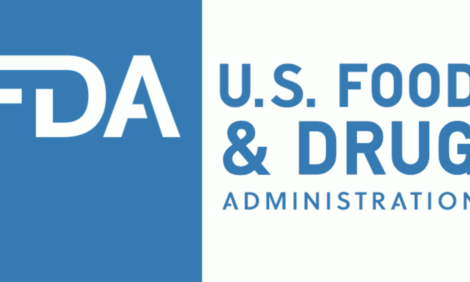



USDA Efforts And Response To Avian Influenza In The United States
WASHINGTON - Agriculture Deputy Secretary Chuck Conner today outlined USDA efforts to protect the United States against highly transmissible forms of avian influenza, a disease that commonly affects birds and has been transmitted to humans in Asia.
"For more than two decades, USDA has worked to prepare for and prevent an outbreak of dangerous strains of avian influenza in our country," said Conner. "Attacking the disease at its source overseas is a main focus for USDA. We also have strict importation restrictions to prevent the spread of the virus in our country and an elaborate surveillance system in place to monitor our bird populations."
Worldwide, there are many strains of avian influenza (AI) virus, which can cause varying degrees of illness in poultry. AI viruses can infect chickens, turkeys, pheasants, quail, ducks, geese and guinea fowl as well as a wide variety of other birds. Migratory waterfowl are also known to carry the less infectious strains of AI viruses. Each year there is a flu season for birds just as there is for humans and, as with people, some forms of the flu are worse than others.
AI strains are divided into two groups: low pathogenicity (LP) and high pathogenicity (HP). LPAI, or "low path" avian influenza, has existed in the United States since the early 1900's and is commonly found here. It causes birds to become ill and can be fatal to them. These strains of the disease pose no known serious threat to human health. HPAI, or "high path" avian influenza, is more fatal and transmissible. HPAI is the type currently affecting parts of Asia and Eastern Europe. These strains of the disease in Asia have been transmitted from birds to humans, most of whom had extensive, direct contact with infected birds. HPAI has been detected three times in the United States: in 1924, 1983, and 2004. The 2004 outbreak was quickly confined to one flock and eradicated. There were no human illnesses reported in connection with these outbreaks.
The USDA Animal and Plant Health Inspection Service (APHIS) works with states to monitor and respond to outbreaks of LPAI. APHIS has provided funding and support personnel to states when LPAI has been detected. When HPAI is detected, APHIS personnel are primary responders, due to its infectivity and high mortality rate among poultry. Close attention is also given to two subtypes of LPAI, the H5 and H7 strains, because of the potential for them to mutate into HPAI. The AI strain infecting both birds and humans in Asia is the HPAI H5N1. There is presently no evidence of HPAI H5N1 existing in the U.S. - neither in animals nor humans.
To encourage producers to report sick birds, APHIS conducts an outreach campaign called "Biosecurity for the Birds." It provides poultry producers with the latest information on biosecurity, in several languages, to prevent the spread of this disease on the farm. Additional surveillance efforts specifically target the live bird markets. USDA works closely with the industry to randomly test commercial flocks as well as testing birds that show signs of illness. USDA scientists have also been testing wild migratory birds since 1998 in the Alaska flyway.
In 2002, the USDA Agricultural Research Service (ARS) developed a rapid diagnostic test for avian influenza. ARS continually improves the sensitivity of the test. This test diagnoses avian influenza within three hours, compared with up to two weeks required for previous tests. The rapid diagnostic test was used in the eradication of avian influenza in Texas in 2004. The test has now been distributed to the National Animal Health Laboratory Network, which includes university and state veterinary diagnostic labs throughout the United States, to better enable laboratories to monitor for and respond to avian influenza outbreaks.
APHIS also maintains an AI vaccine supply for poultry that can be used to create a buffer around an identified area, in the event of a large outbreak among poultry, to contain the disease while it is in the process of being eradicated. In addition, the agency has formed a national network of personnel to assist with surveillance and response in the event of an outbreak of HPAI or other foreign animal disease. That network includes more than 40,000 accredited private veterinarians who report any suspected disease outbreak to federal or state officials.
USDA is working closely with the U.S. Department of Health and Human Services and the U.S. Department of the Interior, state and tribal leaders, along with industry stakeholders, to enhance emergency response plans in the event that HPAI is detected in the United States.
The USDA Food Safety and Inspection Service (FSIS) is working to educate the public about safe food handling practices in response to numerous questions about the human risk associated with avian influenza. LPAI, the type commonly found in the U.S., is not transmissible by eating poultry. If HPAI were detected in the U.S., the chance of infected poultry entering the food chain would be extremely low. Nevertheless, proper handling and cooking of poultry provides protection against HPAI, as it does against other viruses and bacteria, including Salmonella and E.coli. USDA continually reminds consumers to practice safe food handling and preparation every day:
Wash hands before and after handling food;
Prevent cross-contamination by keeping raw meat, poultry, fish and their juices away from other foods;
Wash hands, cutting board, knife, and counter tops with hot, soapy water after cutting raw meats;
Sanitize cutting boards by using a solution of 1 teaspoon chlorine bleach in 1 quart of water; and
Use a food thermometer to ensure food has reached proper temperatures (details available on-line at www.fsis.usda.gov).
Source: USDA - 26th October 2005








